The Åska Bike is a speed-pedelec that is made in Belgium and – hence the look of it – it has a bit more off road use up its sleeve. But is it just the looks or does it really deliver? Enjoy the review!
- Price: € 9798,-. (from € 9599,-)
- Weight: 37,20 kg (Claimed 37 kg)
- Frame size: One size fits all
It was the review of the Stromer ST3 with Pinion and ABS that I reviewed a while ago that triggered Åska Bikes to contact me and ask if I wanted to review this bike. I gave it some thoughts and although the bike is at the moment only available in Belgium, I said yes. The bike just looked too interesting on paper to let this pass. And… Åska means Thunder in Swedish and since I am big fan of Sweden and I spend quite some time there, I found another reason the justify my choice.
Made in Belgium
The Åska Bike is made in Belgium. This was a choice made by Åska founder Filip Dehing. Coming from the car-industry he wanted to design a bike that could be made – or assembled – in Belgium to be less dependent of production in the far east. This wish lead to a totally different approach in designing the frame. Where we mostly see frames made from tubes or hydro formed tubes, Filip Dehing made the choice for aluminum sheet metal in combination with some basic tubing. The frame in whole is laser cut, folded and welded at Gilbos in Aalst in Belgium. Gilbos is a high end manufacturer for machines in the textile industry.
Components form Europe
The components that Åska uses are from Europe. The gear-system is a 6-speed gearbox from the German Pinion, the Neodrives motor is also made in Germany by the Alber company, Öhlins rear shock from Sweden, the Formula fork and brakes are from Italy and even the 950 Wh battery is made in Europe. Just like all other small components.

Size and weight
The Åska is only available in one size. On the Åska website I miss information about the geometry although they do tell me that the bike has a ‘sophisticated’ geometry. Also the weight is not specified. In this case Åska has some home work still to do. After asking Åska send me the drawing: see below. The weight of the Åska is 37,20 kg on my scale and that is spot on with the weight Åska told me later it should weigh. This is the complete bike with pedals, rear carrier and the accessories I added: an aluminium bottle cage and a Quad Lock mount for my iPhone.
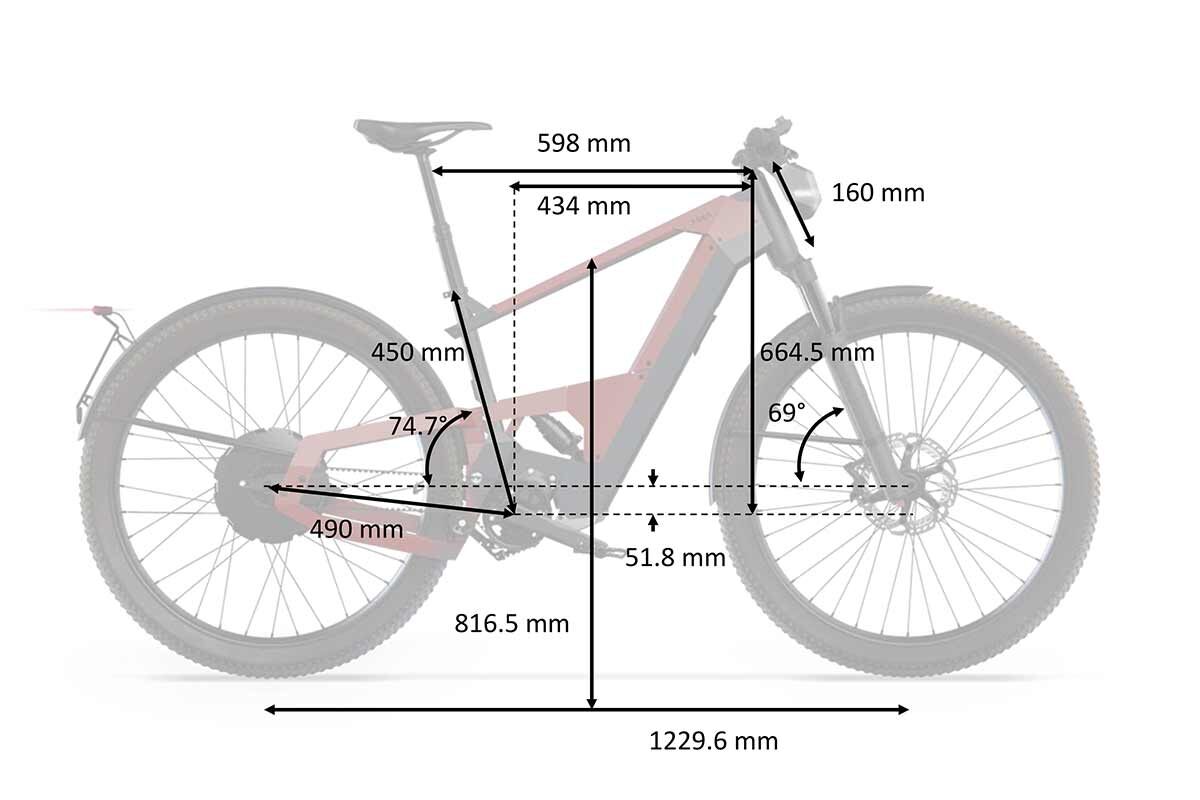
Åska Bike frame
Like I mentioned above, Åska takes a different approach in frame construction; sheet metal is used next to some tubing. The sheet metal and the tubing is 7020 grade aluminum that is designed around the 6-speed Pion gearbox. A big 950 Wh battery is situated in the oversized downtube. The rear sub frame – otherwise no rear suspension – is made from 7020 grade boxed tubing together with thick 7020 sheet aluminum. The frame looks nice and the welding is done neatly but visible. Just how I like it. There is one point to place a bottle cage.
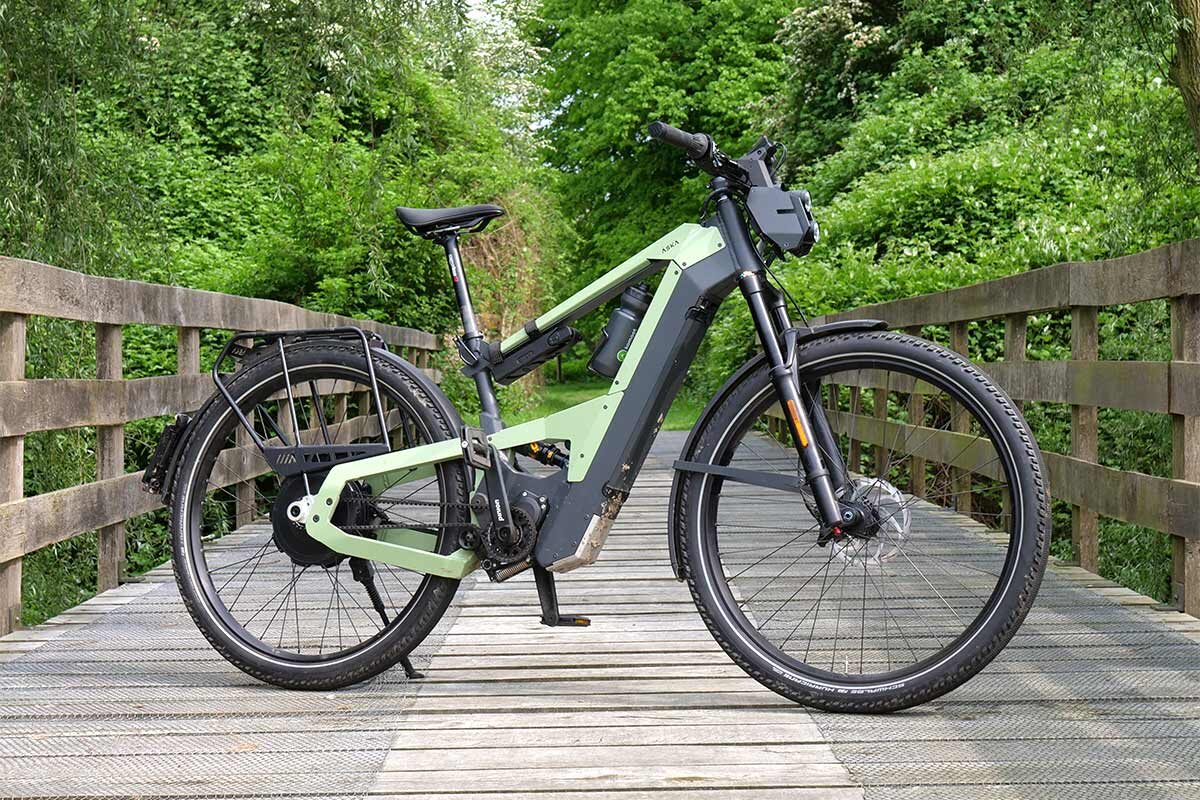
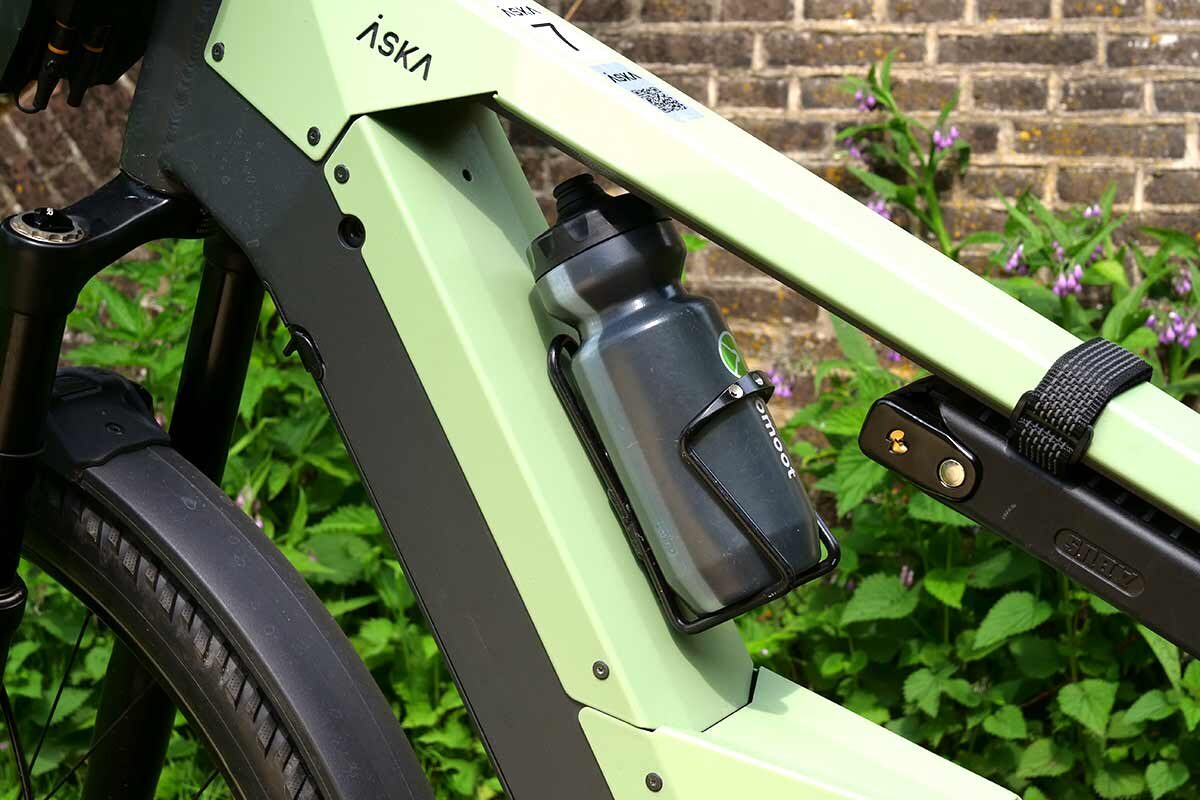
Pinion gearbox
Just like the Stromer I reviewed earlier, the Åska comes with a Pinion gearbox that is positioned in the heart of the frame. In this case it is a C1.6 6-speed while the Stromer was equipped with 9-speed. For the Åska a 9-speed is available too at request. For those who don’t know the Pinion gearbox, let me explain this wonderful system.
Pinion has been on the market since 2011 and is a trusted and reliable gearbox for mountain bikes, travel bikes and commuter E-bikes, E-mountainbikes and S-pedelec bikes. The Pinion gearbox can best be compared to the manual transmission or gearbox of a car. It is built around two axles with gears and a twist grip on the right handlebar to select the desired gear. In addition to the 6-speed, Pinon also makes a 9- 12- and 18-speed version.
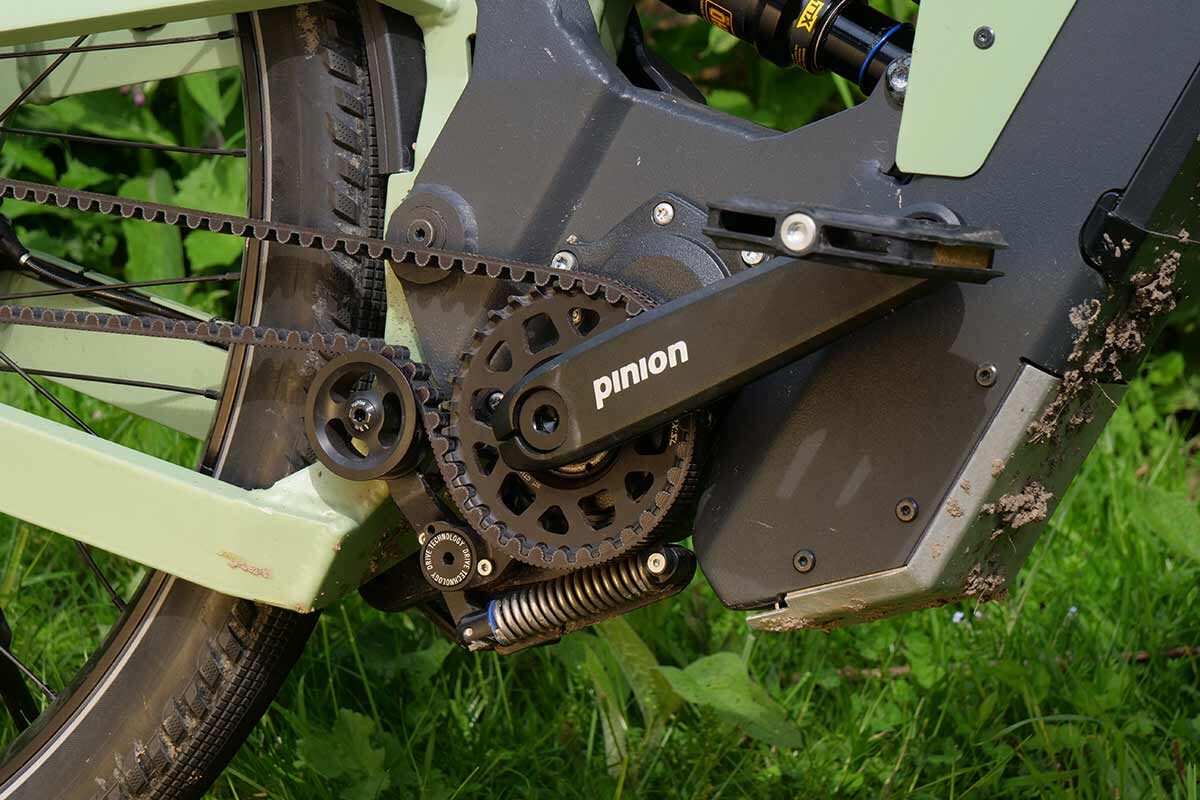
The housing is made from magnesium that is 33% lighter than aluminum making the total weight of the C1.6 is around 1800 grams. The reach of the C1.6 is 295% and the steps between gears is a fixed 24,3%. If you want to know more, read this article I made on Pinion gearboxes.
Shifting gears with the turn shifter on the right side of the handlebar is a dream, but beware not to put (too much) pressure on the pedals when shifting; the Pinion does not like this. The six gears with the reach of 295% are fine in a flat country like The Netherlands. Climbing small hills is fine too. Åska pointed out to me very clearly that the bike is not designed for mountains because of the motor that is mounted in the rear wheel.
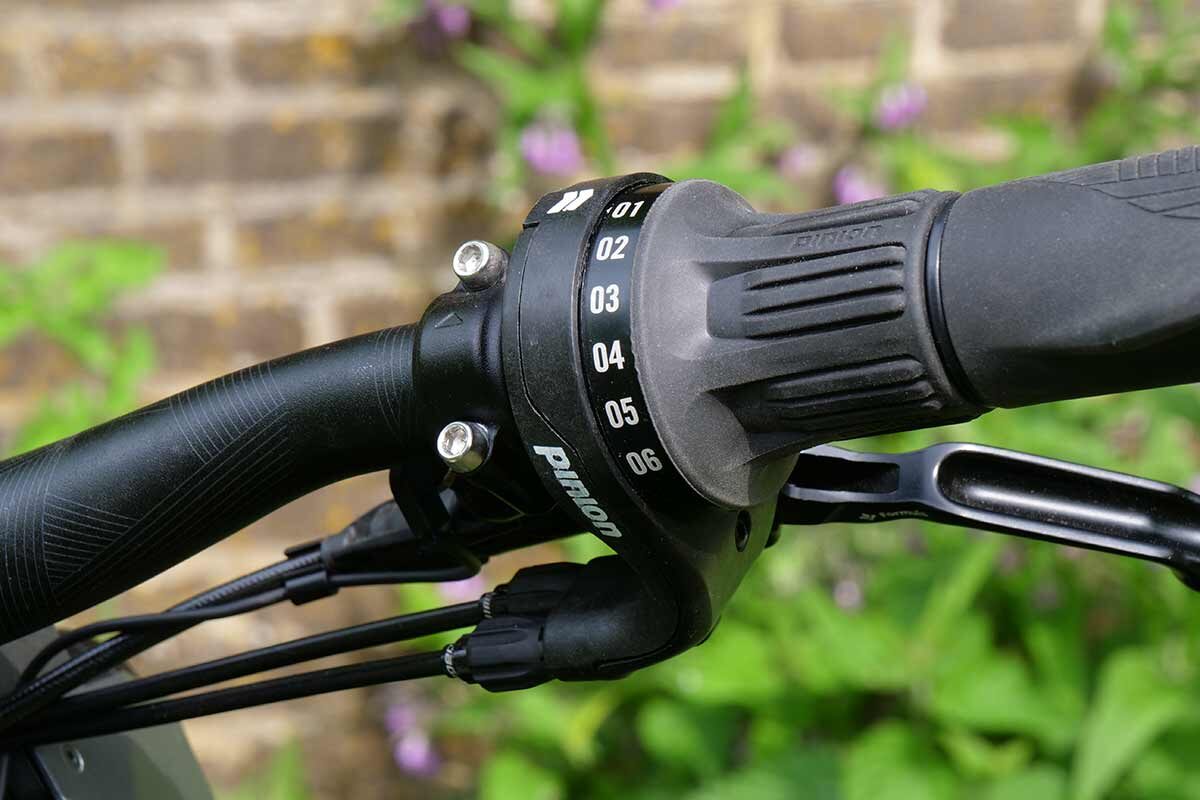
Rear wheel motor
The Åska has a motor that is positioned in the rear wheel. The motor is a Neodrives Z20 RS that has a claimed peak power output of 1200 Watt, a peak torque of 40 Nm and a maximum speed up to 45 km/h. Its weight is approx. 4 kg.
950 Wh battery
The energy that powers the motor comes from a Li-ion 950 Wh battery. The battery is developed by Åska engineers together with the Belgium battery specialist Pulson. Inside the battery are 21700 cells from Samsung. The battery can be taken out for replacement or changing to spare battery; except in my case since just before delivery they ‘lost’ the key. Not a problem for me, but that is the reason why I can’t specify the exact weight. Åska claims a weight of 5 kg.
Charging
Charging the battery is done with a 4.5 Amps charger that you connect to a wall socket. On the other end you just plug it in a socket underneath the head tube. A simple but effective way. When not in use the socket is covered with a good rubber seal. The charging time that I measured is a bit under five hours when the battery is totally empty and with a shed temperature of 15 degrees. On the reach of the battery later more.
To prolong battery life, Åska advices to charge the battery between 20% and 80%. When not in use for a longer periode keep it at 60%. It’s a bit of a pity that you have to take care of this manually. It would be nice if the computer takes care of this when you set this values.
Gates Carbon Belt Drive
The Pinion C1.6 and the Neodrives Z20 RS motor are connected with a Gates Carbon Belt Drive. Underneath the Pinion gearbox and a bit behind the front sprocket a tensioner is positioned to keep the belt tensioned. Because of the construction of the rear sub-frame, no opening in the right seat stay is needed in case you need to replace the belt. Just taking out the rear wheel will do the trick. I think this is nicely done and I do love the belt technique. It’s low-maintenance, clean and above all very quiet.
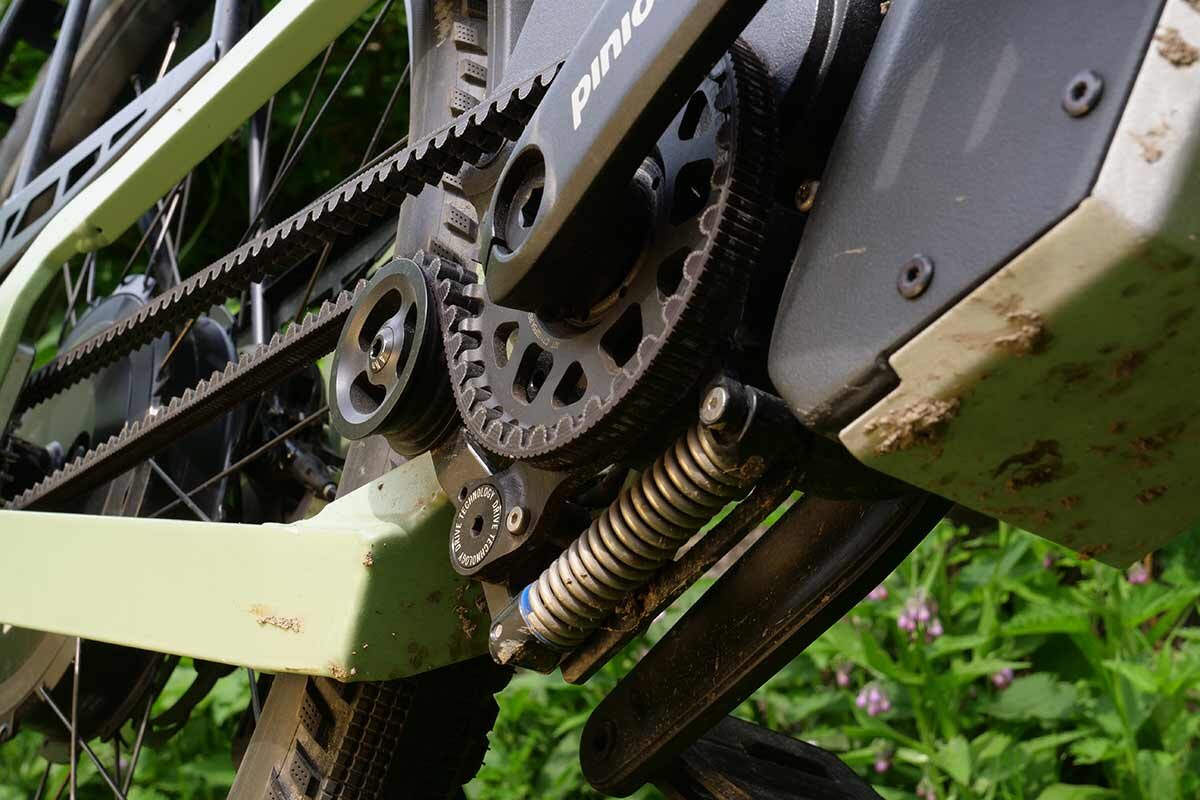
Formula Selva-S front fork
The front fork is a Formula Selvo-S that is designed as an enduro and e-mountainbike fork. This fork can have a travel between 120-160 mm and for the Åska it is tuned to 130 mm. The diamater of the fork is 35 mm making it a solid and stable piece. It weighs approx. 1940 gram.The fork is fully adjustable with 21 rebound clicks, 12 high and low speed clicks and on the rights side of the fork it also features a lockout. The Formula Selvo-S is an air-spring suspension fork with a valve on the top to adjust the amount of air pressure inside. More on this later.
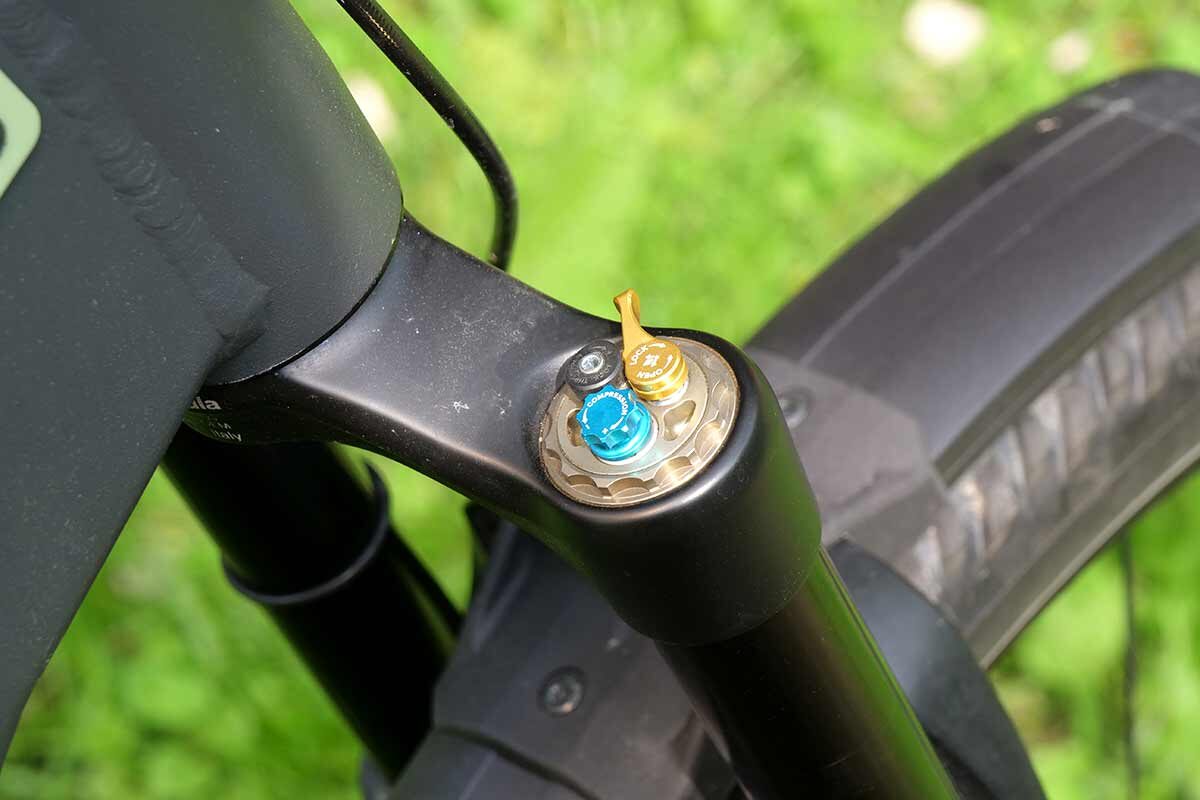
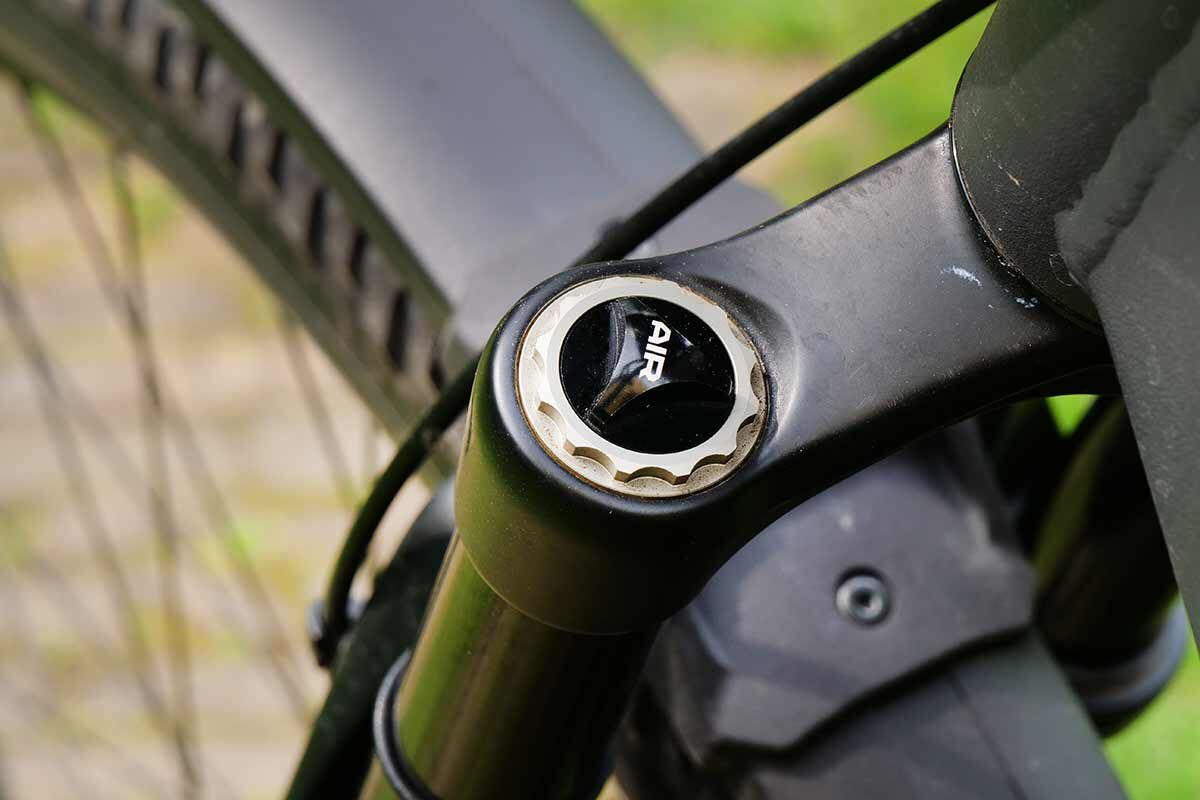
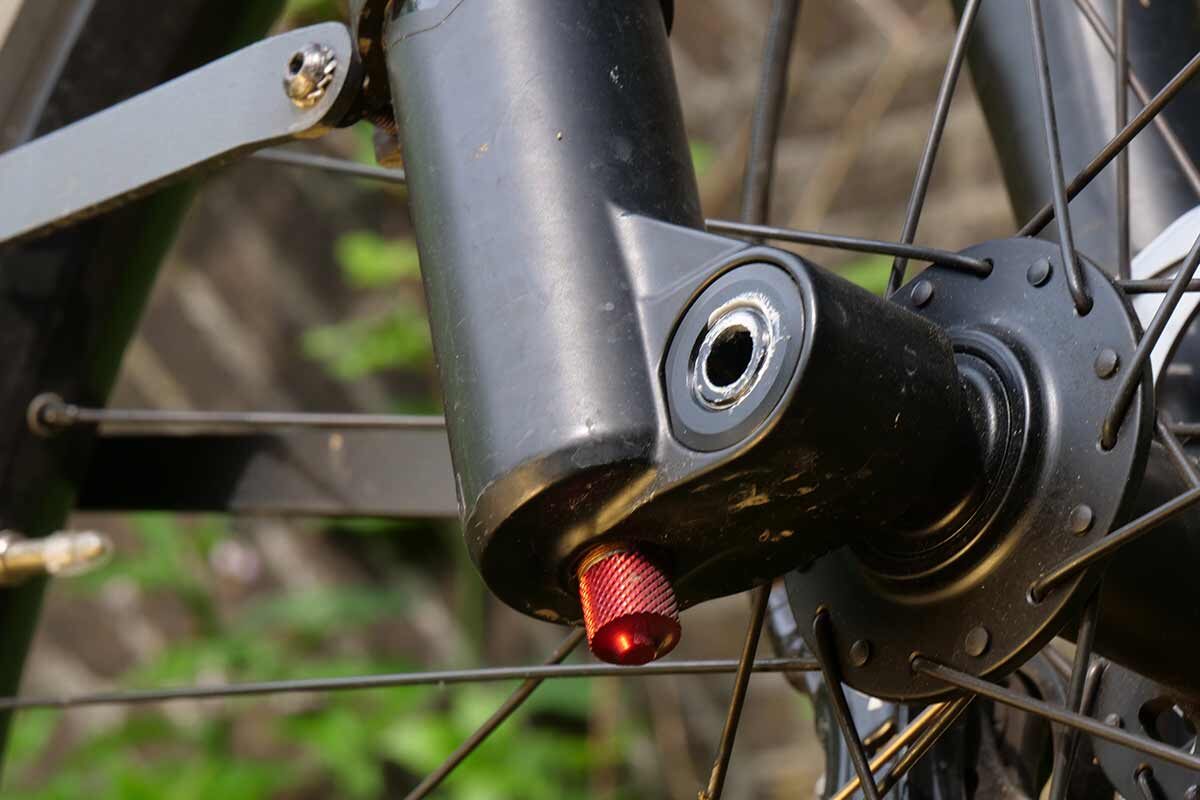
Öhlins TTX1 Air rear shock
At the rear Åska mounted an Öhlins TTX1 Air shock. The Öhlins brand is a famous brand and I used to have them on a lot of motorbikes that I reviewed in the time I worked for a motorcycle magazine. Just like the fork the Öhlins TTX1 Air is designed as a trail and E-mountainbike shock. The shock is fully adjustable in the high- and low speed compression and rebound. The air pressure can be set though a valve.
About the setup of the Öhlins: take a look here.
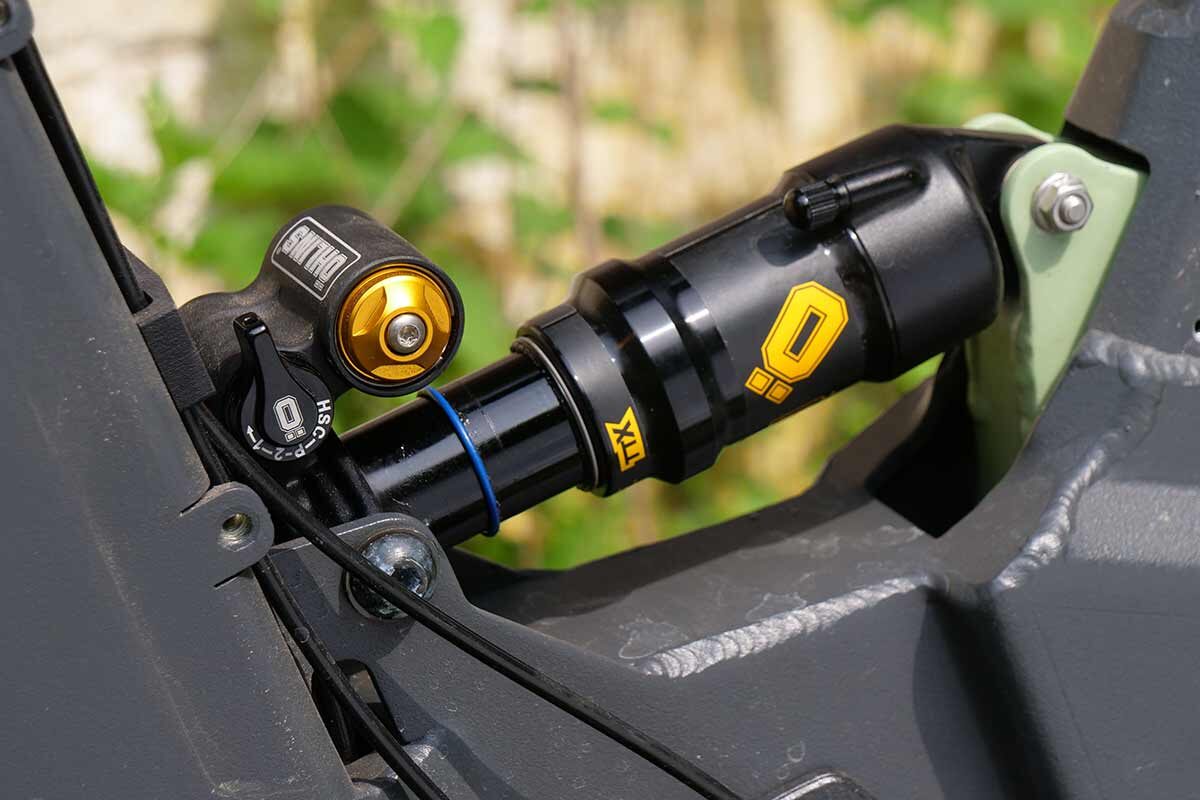
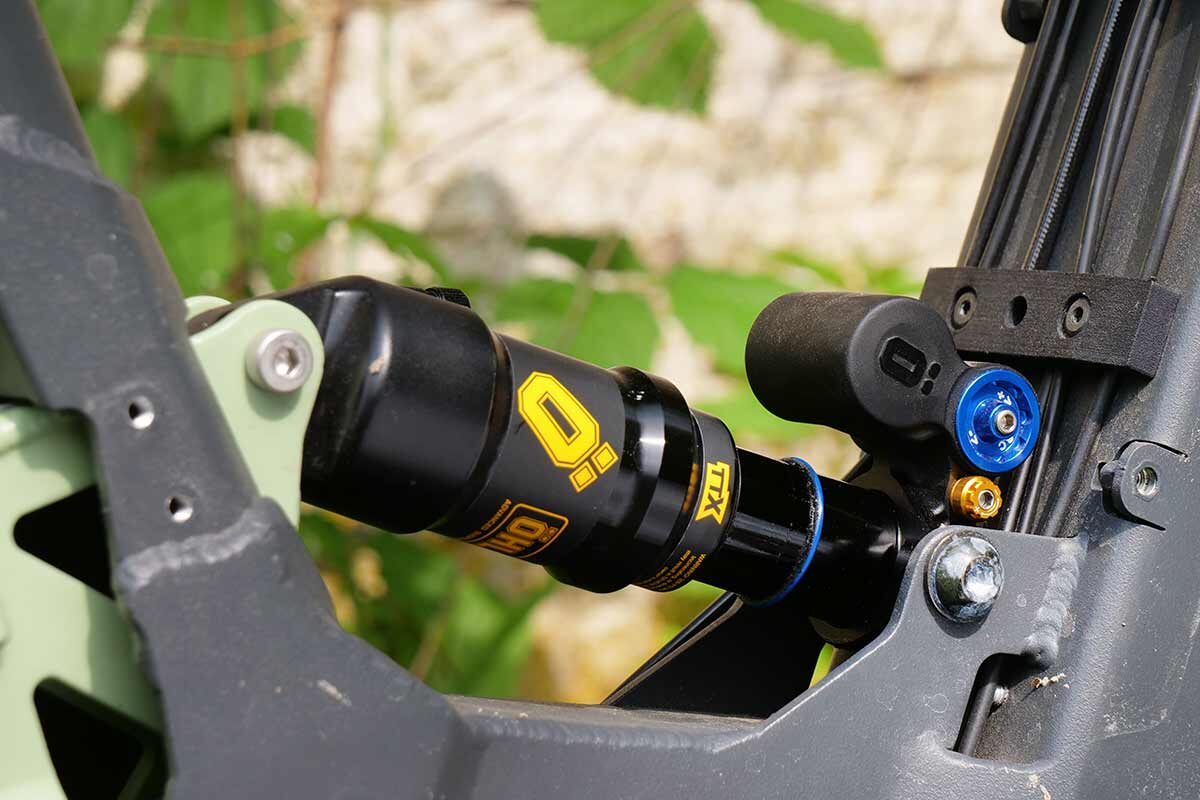
Wheels and Tires
The Åska is a 29-er; it is fitted with 35 mm Rodi Tryp 35 enduro double wall rims. Around the rims you will find huge Schwalbe Hurricane 29 x 2.40 DD balloon tires. These tires are different than what I see on most speed-pedelecs. The Hurricanes are a mix between regular road tires and mountainbike tires; the middle part has a ‘smooth’ road profile delivering less roll resistance and noise. The shoulders do have small teeth for more grip in cornering on dirt roads.
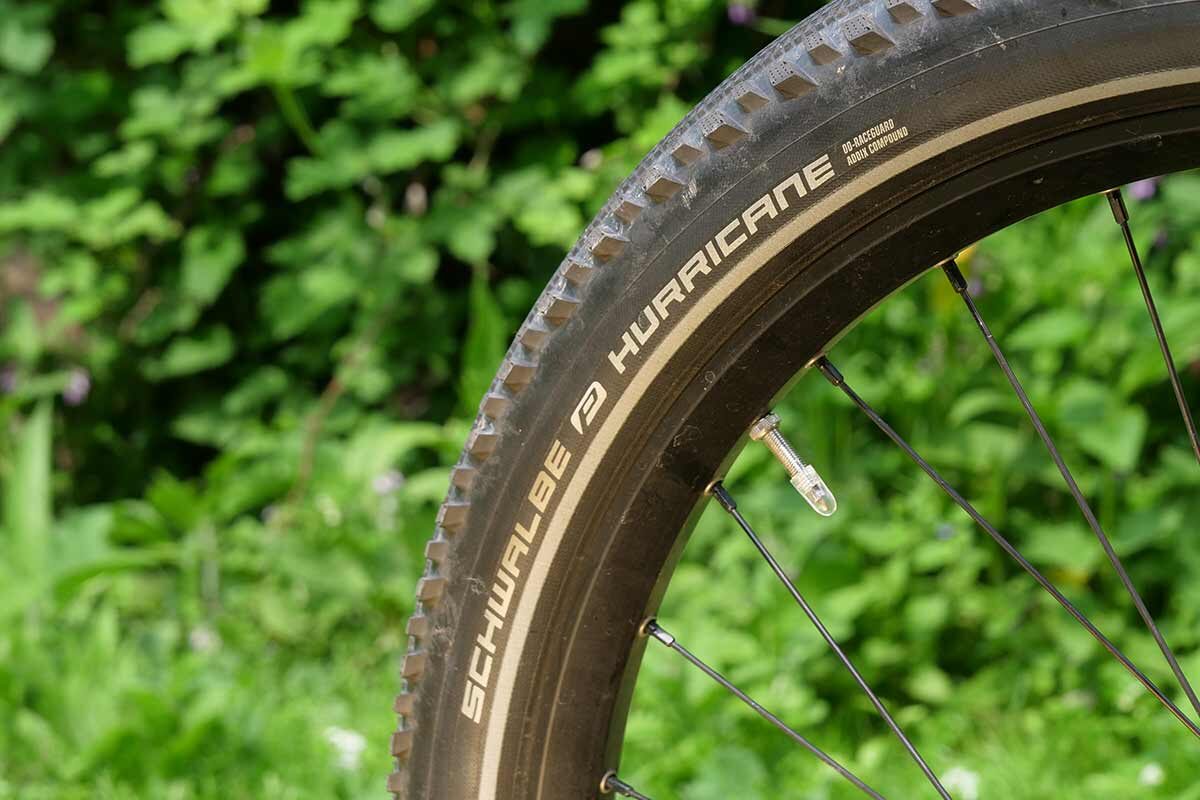
Formula disc brakes
The Åska is equipped with a brakes system form Formula: the Cura 4-series. You will find a 180 mm disc in the front and a 203 mm disc at the rear. Both feature a four piston caliper with a piston diameter of 18 mm.
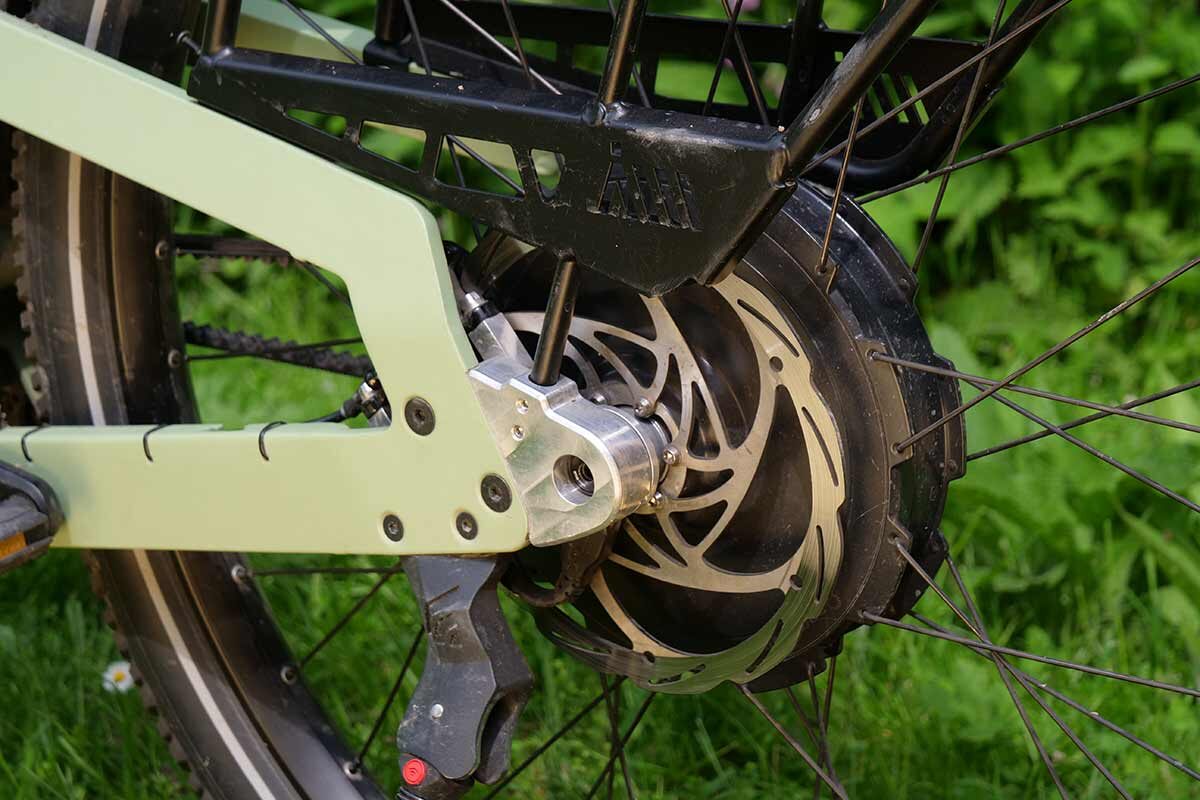
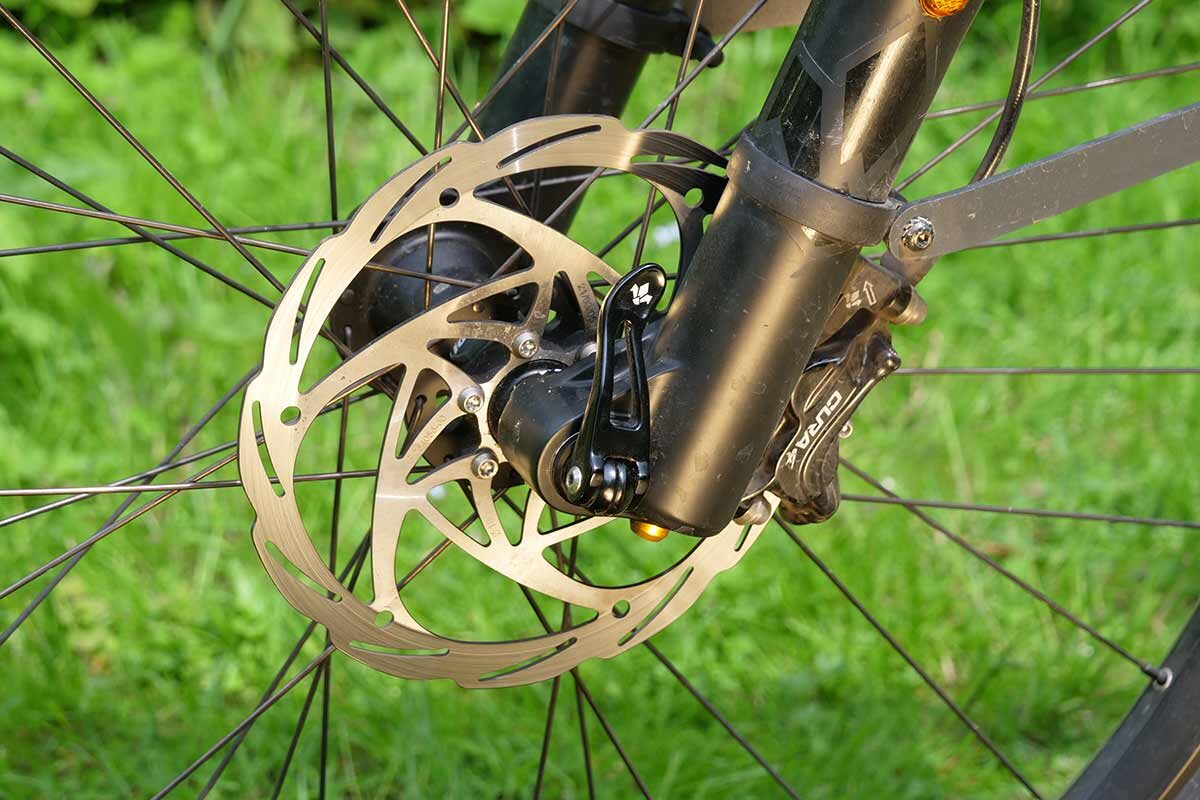
It is a bit surprising to me that Åska puts a small disc in front and a large disc in the rear. Mostly it is the other way around the same diameter. But Åska is not stupid. Braking with the front brake is smooth and predictable. The stopping power is fine. Yes, it could be more aggressive and powerful with a bigger disc, but that would also mean a higher risk of locking up. And that is the positive side of a smaller brake; is hard to lock up. For the rear this is different. It locks up quite easily so take care on wet tarmac.
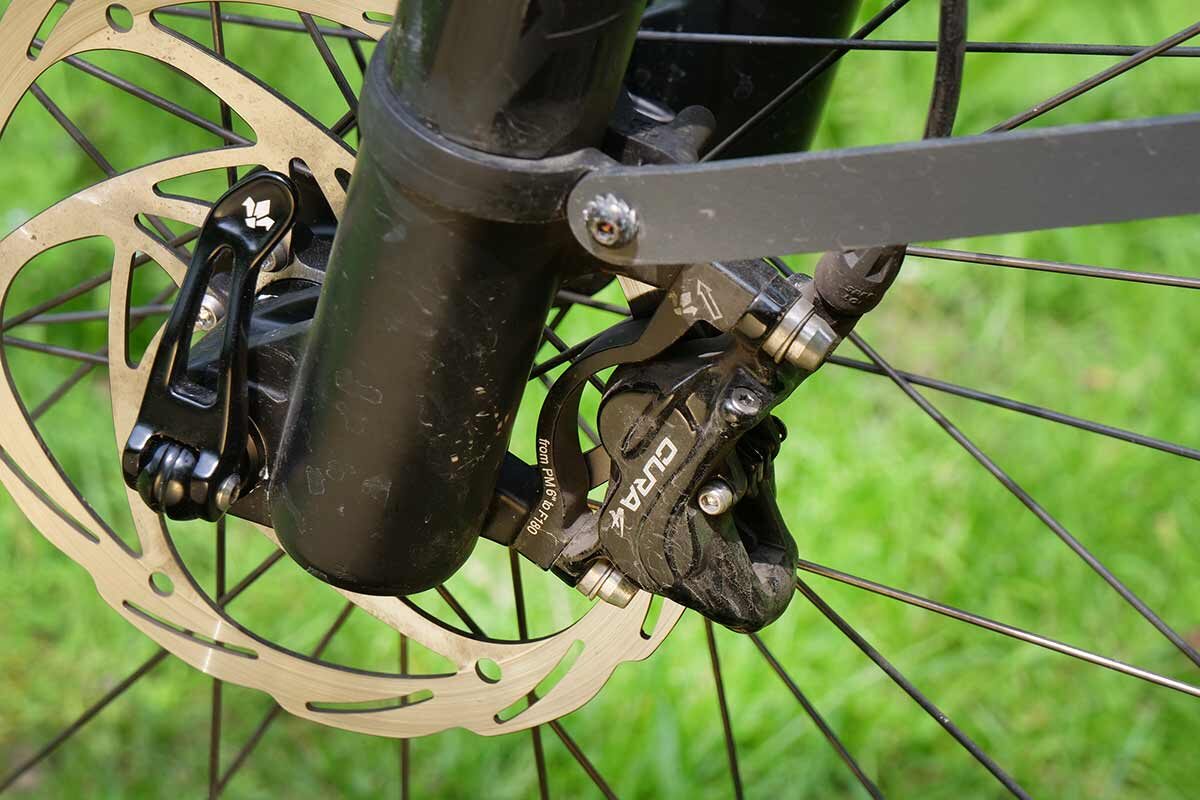
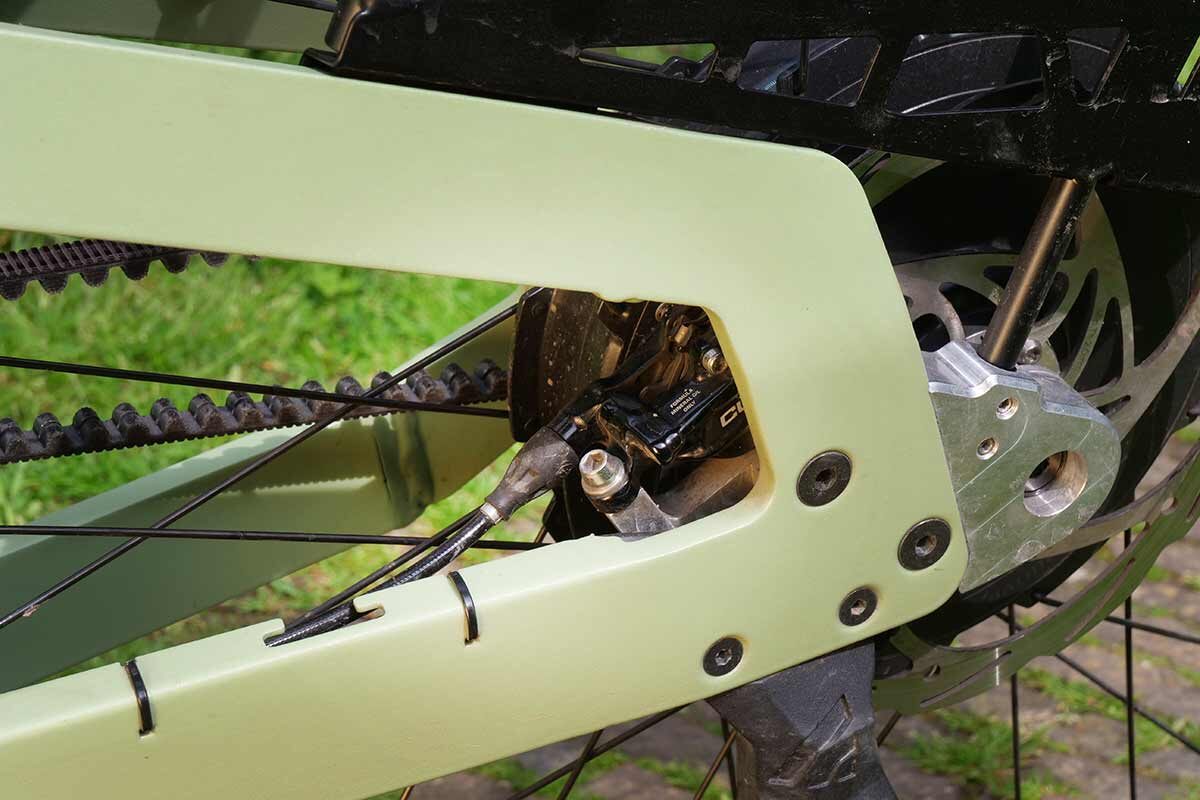
The brake levers are adjustable so that they fit small and big hands. The adjusting knob however is very small and turning it with just your fingers has proven to be impossible. You will need a needle plier or a single hex key to do this. The hex key on my bike tools don’t work since there is to little workspace between the brake lever and the handlebar. All in all: not very convenient when one is traveling.
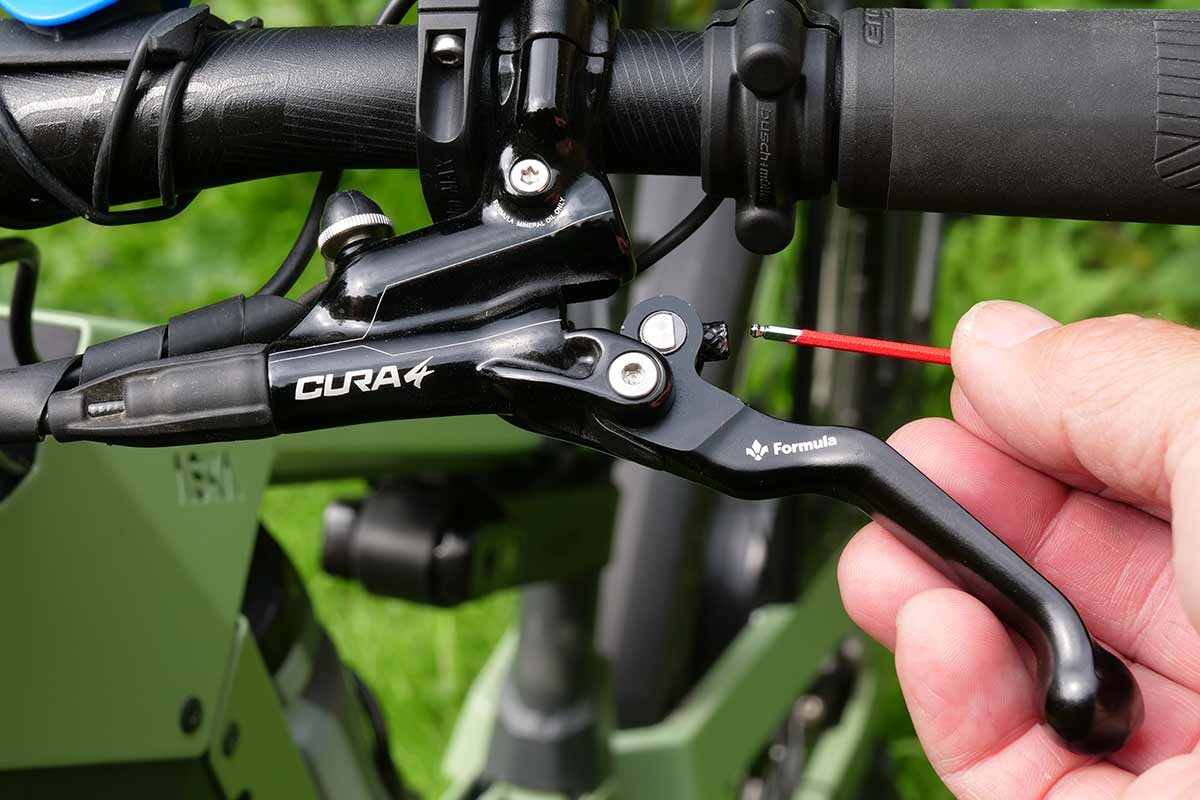
Lights
The lights on the Åska are very characteristic. The two busch+müller IQ-X E headlamps are mounted one above the other. Both lamps are attached to a cockpit that is mounted onto the handlebar and not to the fork or the frame. The lamps are 150 Lux each and provide a very nice beam pattern in front of me. Lighting start close in front of the bike, widen out to the sides and shine over 50 meters far: excellent!

Although the headlamps are super, I find it strange that on the control unit on the left side of the handlebar there is a ‘light’ button, but it does not do anything. The reason? Light and switch are not connected since by law the lights must always be on. I do miss a low and high beam.

At the rear also busch+müller lighting is mounted: a license plate holder with an integrated license plate light and a brake light function. The taillight is visible from a great distance and the brake light is very bright. Behind traffic will see you.
The E-system
Riding with the Åska starts easy. On the right side af the handlebar a control unit with five buttons is mounted. On the top there is a small on/off button. Press it briefly and the system starts calibrating all it sensors and after this is done I am good to go. Starting the bike when one is riding is possible but you will not get any support since the calibration proces can not be done when there is pressure on the pedals.
The control unit also has two large buttons with a plus (+) and a minus (-) symbol and by pressing you change between the five support modes. The buttons are super usable when gloved up. On the left side of the control unit are two small buttons. One that has a light symbol and one that has a menu function and operates the different information screens on the display. They are less user friendly when wearing gloves.
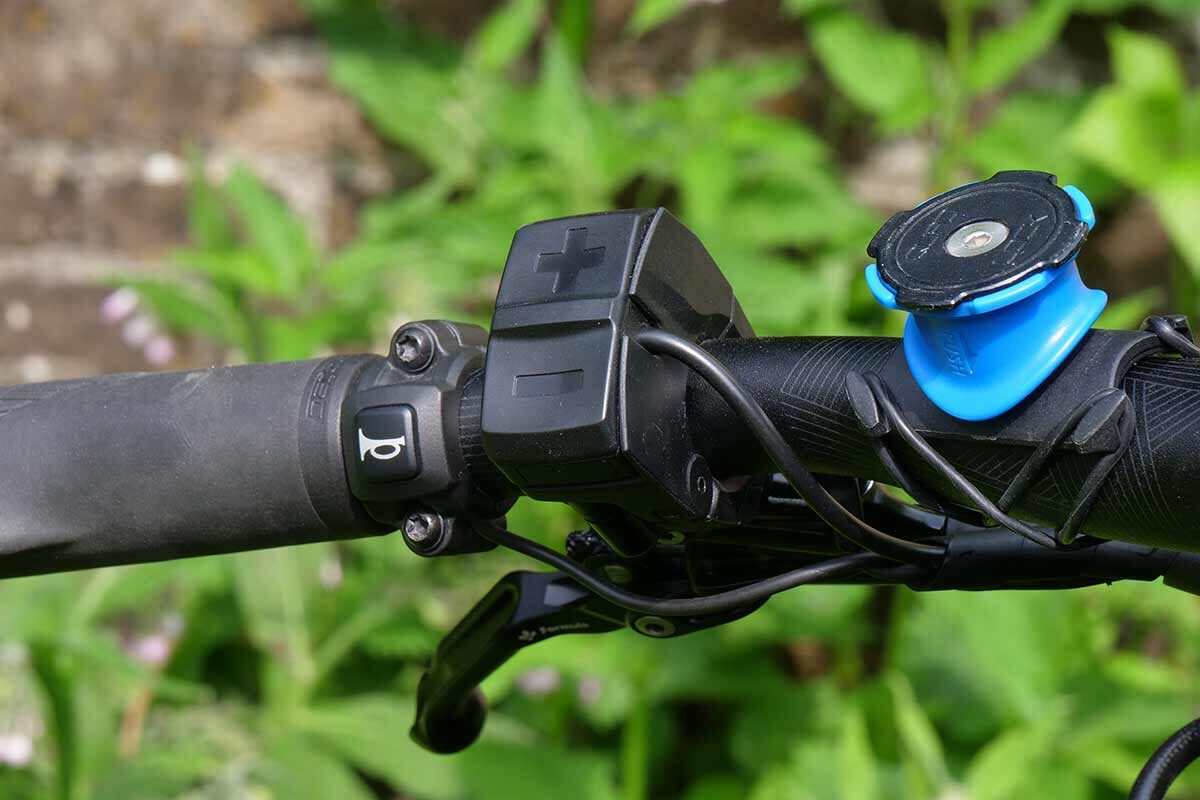
Horn
Positioned next to the +/- button is a button for the horn. Riding in The Netherlands it is a button that one will need from time to time. The horn itself is positioned above and behind the headlamps and the size of it says it all: pressing the button results in a loud electronically BEEEEEEEB. Use it at a distance when you are closing in on a couple of pedestrians or slower cyclist in front of you because it is so loud that it scares the crap out of fellow road users. A bit lower tuning like the horn of a truck or boat would be more friendly.
Display
Next to the control unit, you can scroll through the menu’s using the touchscreen display. That display is mounted in the middle of the handlebar and right in front of me. This is how I think a display should be positioned. If you have seen the Stromer ST3 review, you know what I am talking about. If not… follow the link after finishing this article. The display can be taken of just by twisting it. This is a security feature; the bike does nothing without it.

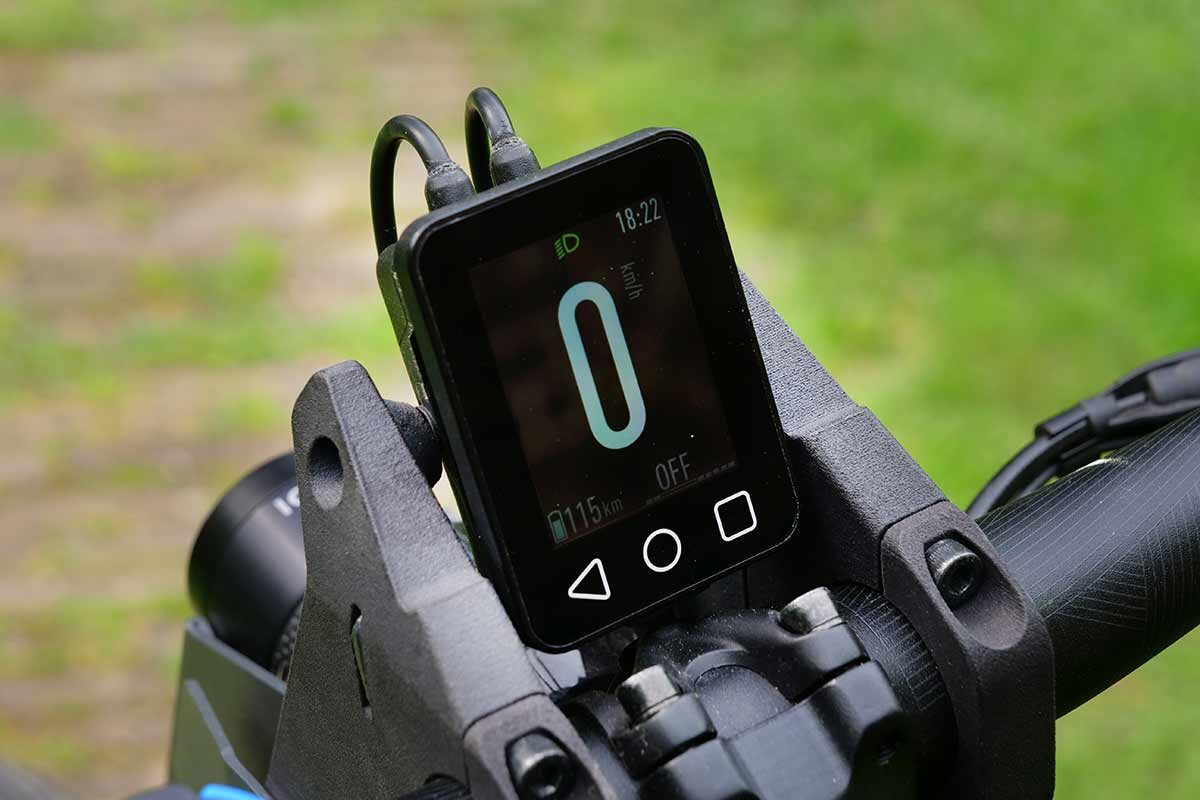
On the lower end of the display three symbols enable you to go through the different informations screens. It is also possible to change the bike setting for example to change km/h to miles, set the time, reset the tripmeter, reach or battery status, etc. The display is not to big but reading the information is fine. What I do love is that the screen can be titled easily for the best readability with sun or bright clouds above me.
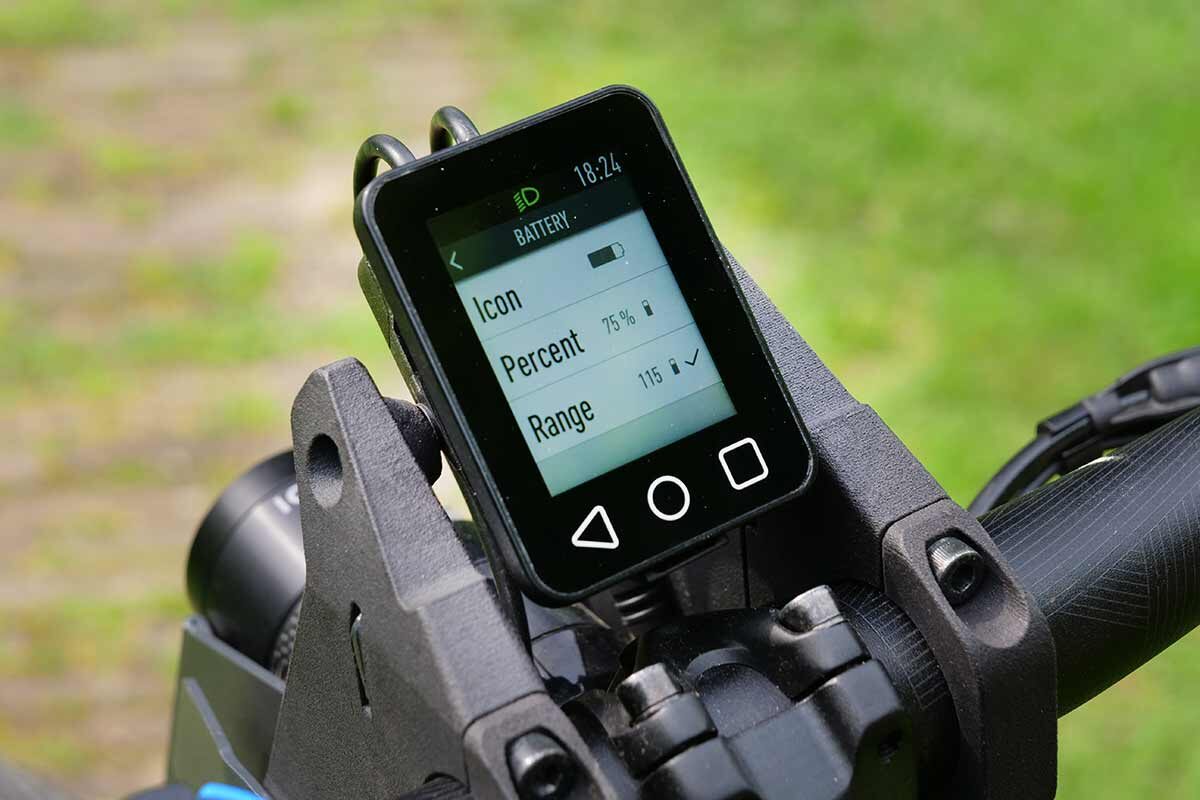
The Åska app
The Åska Bike has a tracker build into the system and like most manufacturers also Åska made an app for the bike. It is downloadable for iOS and Android. I downloaded it, but I could not get it working since I need subscription that would cost me € 234,00 for 3 years. A bit of a bummer.
5 Support modes
When riding the Åska gives me 5-support modes to choice from: 1 is the most energy friendly one and 5 is maximum support. Don’t start riding in support mode five because the bike respons fast and you will fly away immediately. Although I admit it is not as aggressive as a Stromer. The support modes are well chosen and very linear, no surprises here.
There are also 2 ‘negative’ support modes. In -1 and -2 (just pressing the minus button) the motor is used for regenerative braking. I tried it on the downhill slopes of long bridges and I notice it is working. But you will need long downhill winding mountains roads to get any effect and since the Åska is not for the mountains… Pedaling in -1 is a good exercise though.
Riding in practice Part I
The position on the Åska is very well chosen for a one-size-fits-all geometry. With my length of 1.63 cm it is a nice balance between sportive and relaxed. Never too much pressure on wrist or bum. The Ergotec Low Riser handlebar is 700 mm wide and gives a lot of control. A Ergotec M-77 mirror is positioned under the handlebar and gives most of the time a good view on what is behind me. The Ergotec AG Ambition TPE grips and the Selle Italia Model X seat are comfortable.
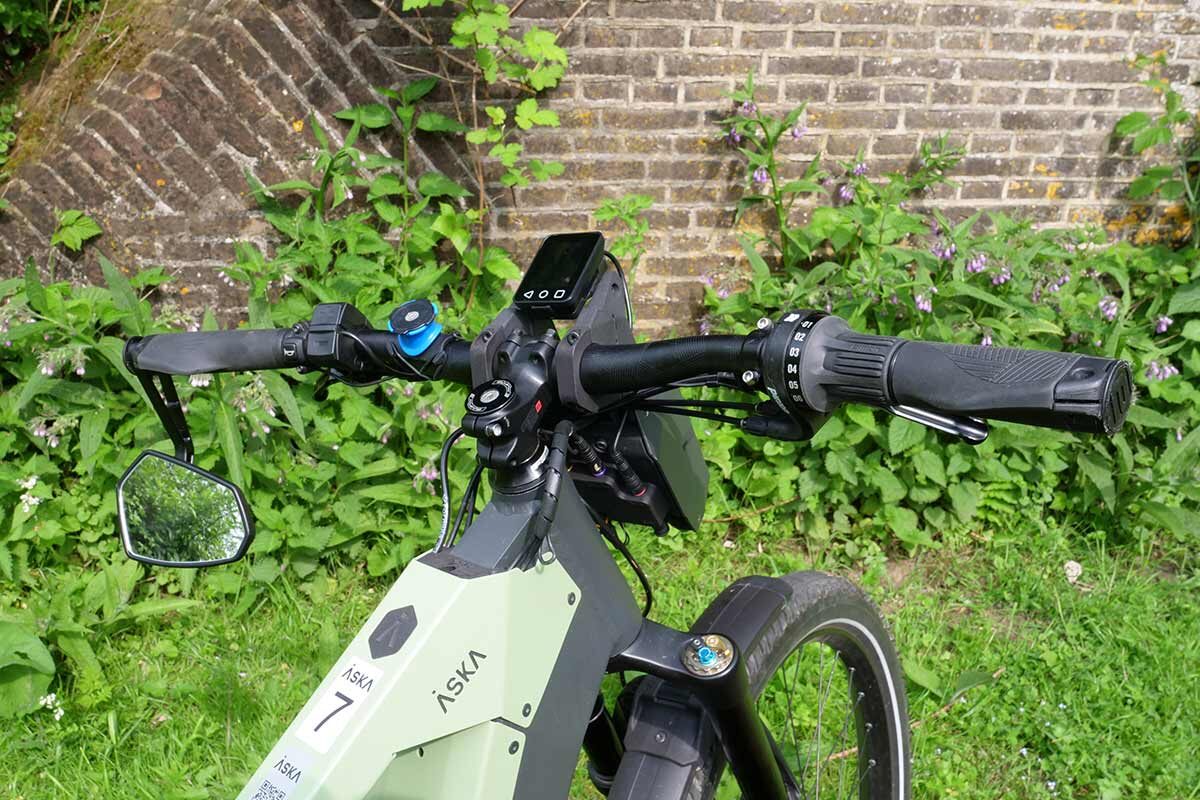
What I noticed when riding the bike at first in the factory setup how I got it, was that the bike had a certain unrest in it. Riding without panniers the stability was fine, but riding with panniers and about 22 kg on the rear carrier this changed dramatically. The bike felt wobbly and insecure in the straight line and taking corners or changing from one corner into the other (winding S) was not nice either. Mostly the reason for this is a incorrect setup of the suspension and tire pressure. And of course a lot of weight on the rear of the bike.

Correct suspension setup
With a full suspension bike it is important to set everything to the riders weight. That means setting the correct air-pressure first. When I got the bike the front fork was set to 100 PSI what is correct to a rider of 100 kg if you follow the instruction on the fork. But with the Åska there is a bit more that meets the eye.
Fork setup
Åska advices to add 20 kg to the suggested weight of Formula. I am 63 kg so with 20 kg extra I adjusted the pressure in the fork to 85 PSI. Simply connect a fork pump to the valve on the top left fork head. After that it is important to set the rebound too and that is just a lot of experimenting to get it to your personal liking. What I do like is dat on the top right side the fork has a lockout. More in this later.
Shock setup
For setting the rear Öhlins things are a bit more complicated. The shock is hidden in the frame and I could not connect the pump to the valve. Neither it is possible to adjust the rebound or even to get to the selection knob that lets you choice the shocks damping characteristics: soft, hard and almost lockout. The aluminum cover is just to protect the shock and has no stiffness function. The cover is attached with small Torx screws so taking the cover of is the way to go. Setting the shock is almost the same procedure as the fork expect for the extra weigh. I adjusted the pressure to 220 PSI. About the setup of the Öhlins: take a look here.
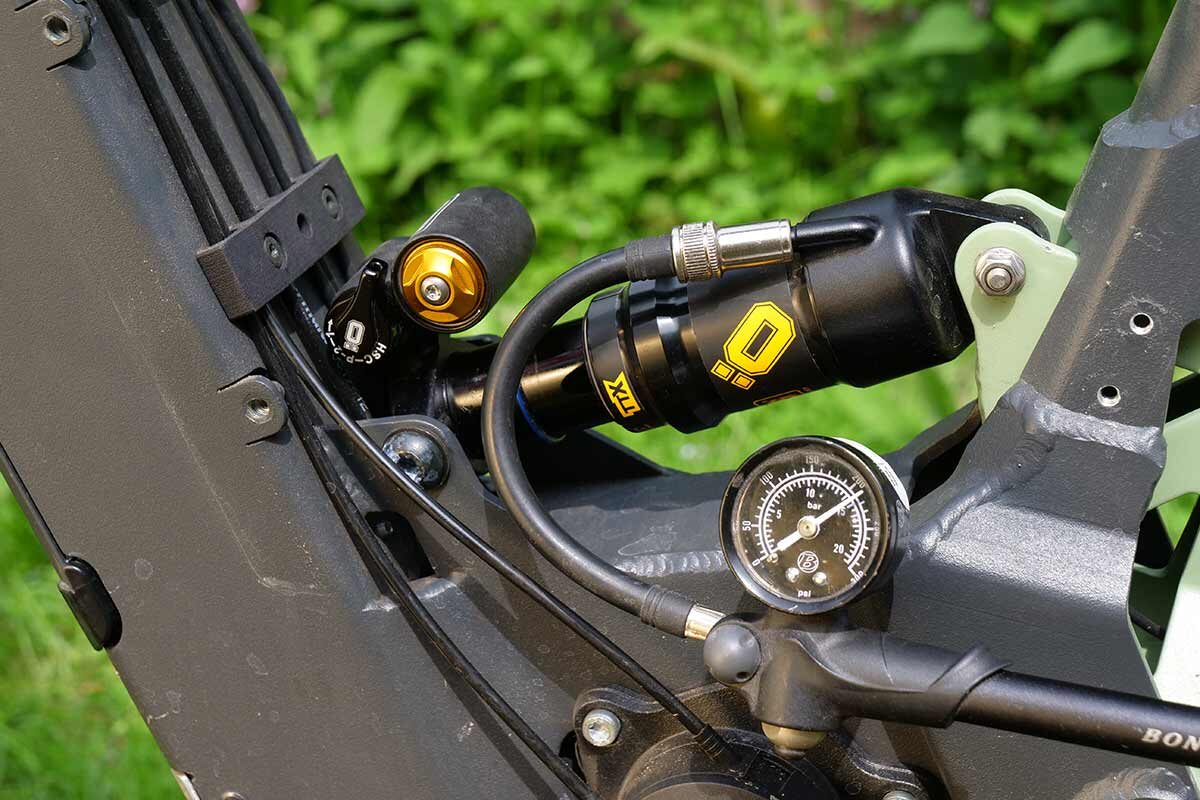
Correct tire setup
The pressure in the big balloon tire is one of those things that does a lot for the handling of the bike too. Åska advices a pressure of 2.2 bar. After a lot of experimenting I found that for the front tire this 2.2. bar works fine but I needed a bit more in rear tire. I found the sweet spot at 2.5 bar.
Riding in practice Part II
After adjusting the pressure in the fork, the rear shock and the tires the wobbly issue was almost over. There was one thing that I needed to do the get it right: position the saddle one cm closer to handlebar. With this al done riding the bike is absolutely a joy.
Riding with 45 km/h in support mode 5 on smooth tarmac is a dream. I have ridden the bike on tarmac with the fork in lockout and the rear in hard setup and that works super. Because of the big balloon tires small humps and bumps are hardly noticeable. Taking the lockout off, results in more damping of course and also a little bit less stability that is mainly noticeable in fast changing corners. But…. The best thing is yet to come…
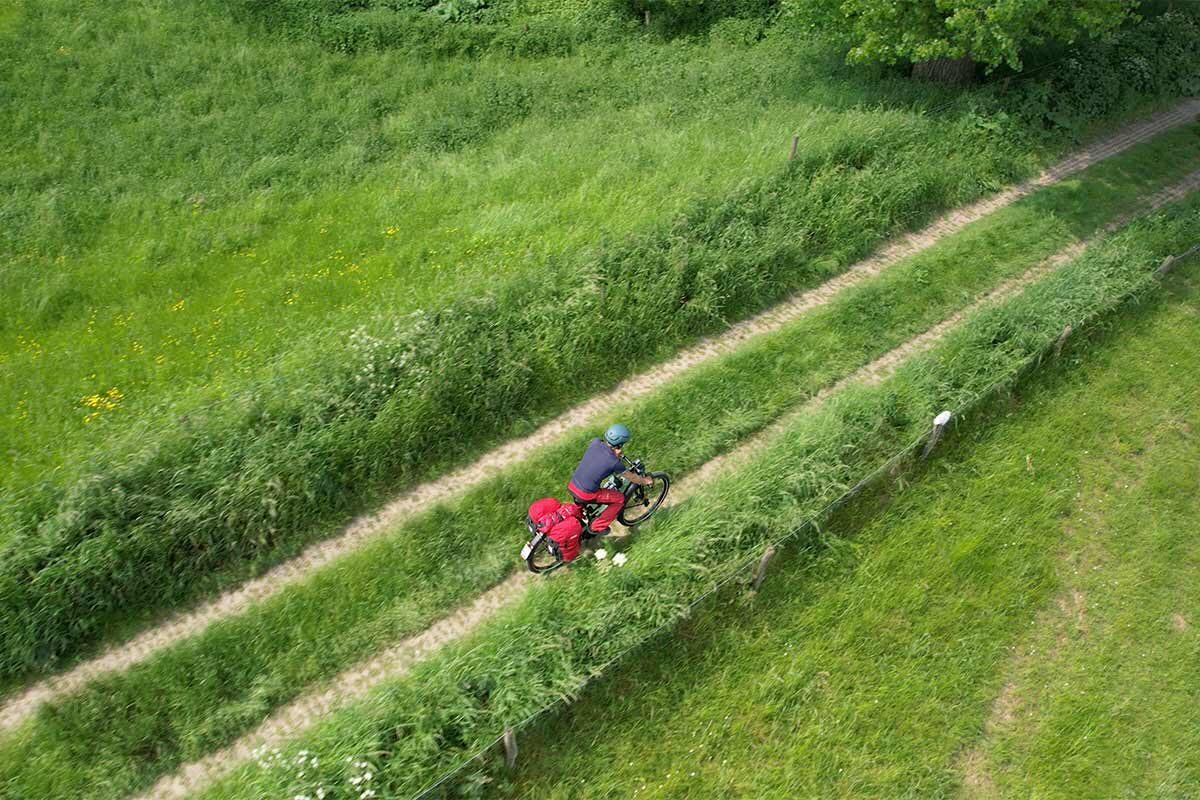
Off road handling
Because of the suspension it is very tempting to go off road with the Åska. Riding through fields is possible but that is not what we should do. Riding gravel roads, forest roads or dirt tracks with a lot of potholes is not a problem with the Åska. With front and rear suspension fully open, the bike has no issue with doing 45 km/h in support mode 5. The bike flies over everything and I loved it. For the panniers this is a different experience.
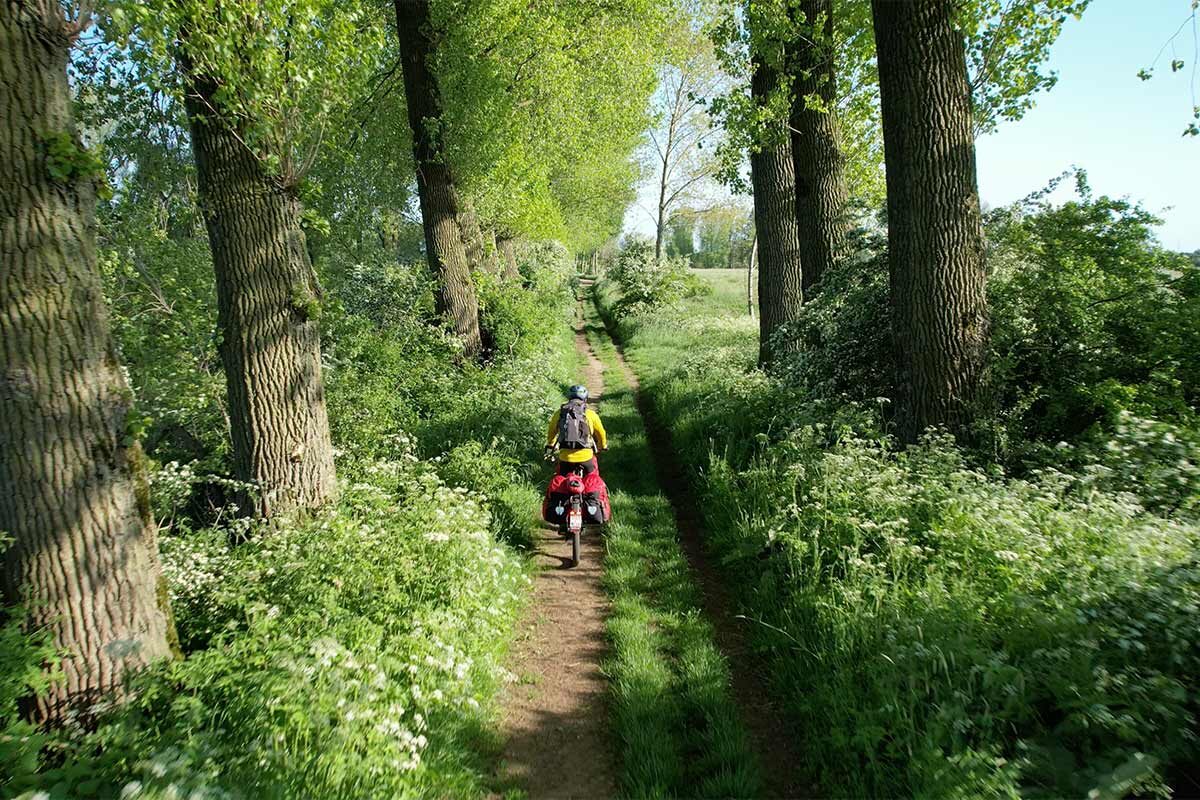
Carriers and luggage
The Åska is equipped with a rear carrier. It is rated The carrier does not come with the bike; it costs a extra € 199,00. It is rated for 25 kg and that is fine for holiday bike trips with a small tent or traveling from one B&B to the other. I always review trekking bikes with two rear panniers filled with 15 kg in total and a tent and sleeping bag in the middle. For me this is more than enough gear to bring on a trip.
The carrier looks very solid but it is not top notch. It is connected to an aluminum part that is connected to the frame and the very sturdy aluminium dubbel walled rear fender from Hebie. While riding with the panniers I can feel when changing direction that the construction is not as stiff as I would like it to be; the back end responses a bit late. After riding a gravel road I lost a bolt that connects the carrier to the aluminum part and… the rear fender is slightly bent to the left. Talking about the fender: the gap between fender and tire is too small. It clogs up with dirt and that means rubbing sounds.
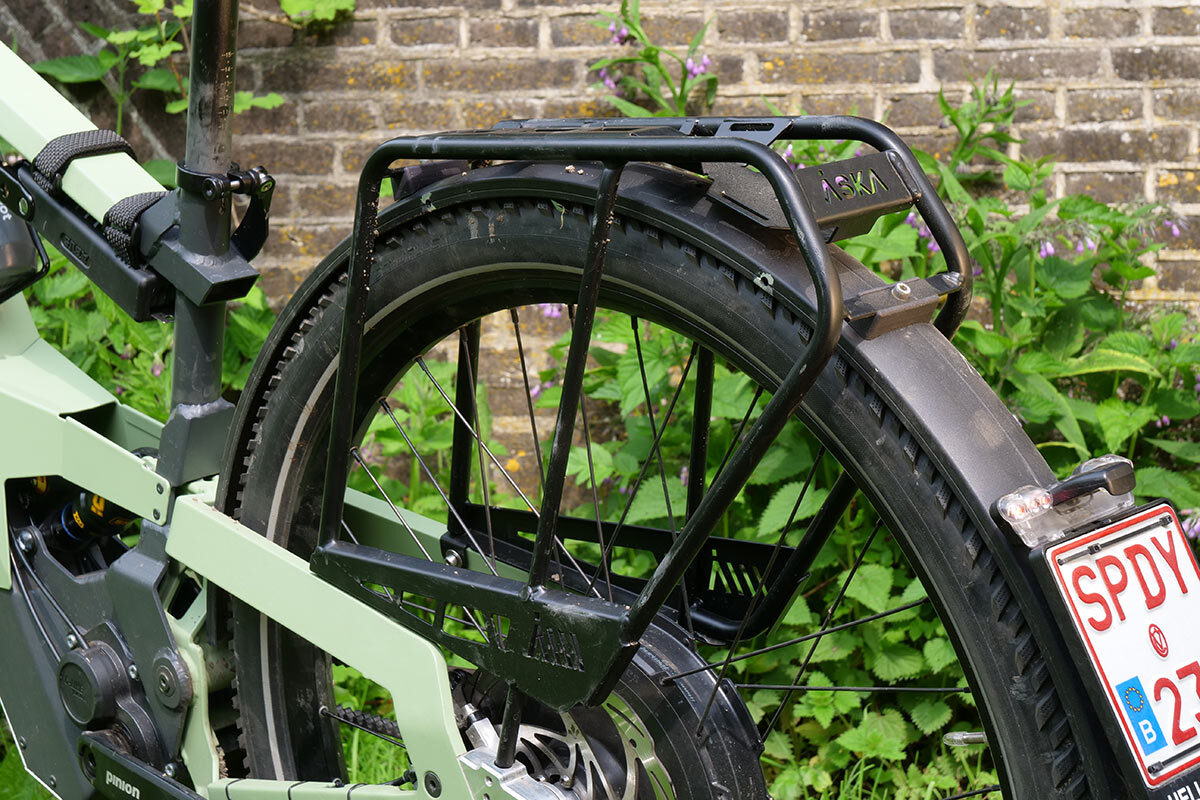
Battery life
Last and almost least: how is the battery life of the Åska. Well, Åska has a few nice case studies that – to my opinion – are very clear on real battery life and that endorses my experiences.
In support mode 5 doing 45 km/h (it goes 46 km/h to be honest but not faster) without panniers I get 43 km of range. This is measured on a dyke with half the distance the wind from behind and the wind in my face when returning home. Riding panniers a relaxed trip in mode 2 and 3 and sometimes 4 with an average of 34 km/h I get 85 km. Riding the bike like a normal e-bike in support mode 1 (sometimes 2) with about 25 km/h – which is still a nice speed when traveling – I get around 110 km of range.
What is nice is that the bike when getting to the end of it’s energy will give you less support so you will get some more distance out of the energy. Overall I think battery life is fine for the different types of rides and it is up to you if this will work for your use of a speed-pedelec.

My verdict
If you would have asked me a couple of years ago: ‘would you like a full suspension speed-pedelec?’, I would have said ‘NO!’ I don’t like suspension trekking bikes so why would I like a very fast fully speed-pedelec? The Åska changed this.
There is not much I don’t like about the bike. The riding position and comfort is a nice mix between sporty and relaxed. I love the smoothness and the silence of the Pinion C1.6 gearbox together with the Gates Carbon Belt Drive and the quiet Neodrives Z20 RS. Power deliver is wonderful and the 5 support modes are well chosen. The reach of 295% is fine for almost flat countries like The Netherlands. I like the e-system with the nice adjustable display in front of me.
The range of 43 km in support mode 5 is not the best and might be too short for some of you wanting to commute from home to work and back without bringing the charger or having to buy a second one. A reach of 80 km in mixed support modes 2, 3 and 4 is fine for nice days of bike travel.
The fact that Åska puts a small disc in front and a large disc in the rear, is clever. Braking with the front brake is smooth, predictable and hardly locks up. The stopping power is fine. The rear locks up too easily. Adjustment of the brake levers could be more rider friendly.
But… I love the Åska because of its suspension. Yes, it takes time, effort and knowledge to set it up correctly to your personal liking. On tarmac the handling is predictable and comfortable. Even with the fork in lockout position; the balloon tires do their job. Riding on bad dirt-tracks is a joy. Doing 45 km/h in support mode 5 with suspension fully in use, is almost just as good as riding a downhill mountainbike. Did I have fun? Hell yeah!
That the rear shock is hidden under a cover is impractical. That I can’t adjust the hard/soft setting on the shock like I do on my fully mountainbike while riding… is even stupid. But on a mountainbike I am in a hurry, not with Åska. Stopping to change the setting… It’s part of the deal so I forgive the bike this flaw.
A flaw that needs improvement is the construction of the rear carrier. It is just not stable enough. A thing I don’t get is that I have to pay extra for the Åska app If I want to use the tracker that is build in the bike. This should be included in the price of the bike.
The Åska retails for € 9798,- with the rear carrier and € 9599,- without. That price is quite nice if one takes into account that it has some very costly components with the suspension. But… it also has a few flaws and they need to be taken care of before I would spend this amount of money on what in potential is one of the most fun bikes I have ever ridden.I rate the Åska at 8.9 out of 10 points total.
Information
Link to the manufacturer: www.aska-bike.com
